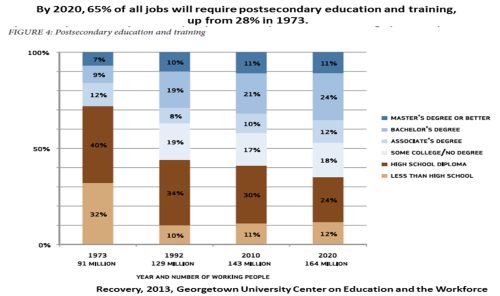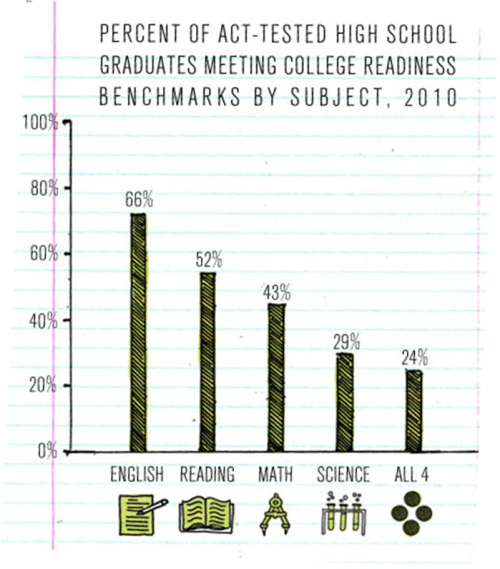
While I was browsing the internet looking for some economic data, I came across this 2016 report from the Pew Research Center: The State of American Jobs. And it is compelling! The Pew Research Center is “a nonpartisan fact tank that informs the public about the issues, attitudes and trends shaping America and the world. They conduct public opinion polling, demographic research, content analysis and other data-driven social science research.”
This report is hefty at 95 pages, but it is totally readable. And full of great information about the state of the U.S. workforce. I couldn’t put it down. (Well, I couldn’t stop scrolling forward.)
There are five sections – and they’re all fascinating. If you have anything to do with people in your organization – hiring, managing, training, deploying – there will be nuggets here that will absolutely help you be more effective. The five sections are:
- Changes in the American workplace
- How Americas assess the jobs situation today and prospects for the future
- How Americans view their jobs
- Skills and training needed to compete in today’s economy
- The value of a college education
Each of these alone are fascinating topics and the data/analysis provided generate great food for thought and action. An opening overview section sets the stage for a fascinating discussion of how American workers are assessing their skills, their ability to be competitive in the economy and the role of the U.S. education infrastructure to ensure employability.
Here are two graphs from the overview section that ought to catch your eye. First:
Each of these graphs tells a profound story about workers, responsibility for employability, and the role of our education system in preparing workers for careers. And these are just in the overview. Wait until you see the nuggets in each of the following 5 chapters.
95 pages seem long – but it really isn’t. There are insights galore here that can help you in your talent attraction, development, retention and deployment policies and programs. And you don’t have to dig to get to the nuggets. They’re right there on the surface. Download it here, and browse through it first. Then go back and delve in to the chapters that really appeal to you. If you’re in any kind of people business – and who isn’t? – those nuggets will be valuable. Totally worth your time.













 Many business leaders and most talent management professionals know that the demographic shifts that are happening now and are projected to happen in the next several years will impact every organization’s ability to meet its business goals. On top of demographic trends, education trends are also going in the wrong direction. Between 1997 and 2009 the U.S. position as a world leader in education has slipped from 4th to 11th, as an example.
Many business leaders and most talent management professionals know that the demographic shifts that are happening now and are projected to happen in the next several years will impact every organization’s ability to meet its business goals. On top of demographic trends, education trends are also going in the wrong direction. Between 1997 and 2009 the U.S. position as a world leader in education has slipped from 4th to 11th, as an example.



